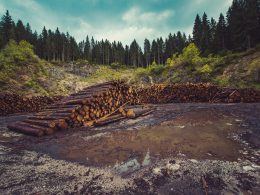What Is Aluminium?
Aluminium is the most common metallic element found on the crust of the Earth.
Aluminium is part of the boron group, and exhibits a silvery-white color, is non-magnetic, soft and highly ductile.
The chemical symbol of aluminium is Al and it has atomic number 13.

What Are The Main Characteristics of Aluminium?
Aluminium is a metal very lightweight and resistant to corrosion, and is widely used industrially in all kind of products from Coca-Cola cans to modern cars.
Additionally, aluminium is relatively strong, elastic, and offers good conductivity.
Aluminium has a low melting point, which makes it easily recyclable.
How Do We Obtain Aluminium?
The process of smelting aluminium starts with bauxite, which is then transformed to alumina, and finally to aluminium.
What is Bauxite?
Bauxite is the raw material for the production of aluminium.
Bauxite is an ore that contains large quantities of aluminium oxide, also known as alumina.
Typically, bauxite contains about 30-35% of aluminium, and its mining occurs along the tropics.
Where Are The Largest Reserves Of Bauxite?
The largest reserve-holders of bauxite are Guinea, Australia, Brazil, Vietnam, Jamaica, and China.
Guinea holds about 26% of the world’s reserves of bauxite, while Australia about 21%, and Brazil ~12%.
While bauxite is abundant, the economics of mining and the political stability of the producing countries deeply affect the availability of supply.
The largest producers of bauxite are currently Australia and China, although the latter only holds about 3% of the world’s reserves.
What is Alumina?
Alumina is the common name for aluminium oxide.
Alumina is the semi-raw material that yields aluminium after a complex smelting process.
How is Alumina produced?
Refineries extract the alumina from the bauxite ore using the Bayer process.
About 4-5 tons of bauxite are required to produce 2 tons of alumina, which then yields about 1 ton of aluminium.
Subsequently, refineries smelt the alumina to produce primary aluminium.
Where is Aluminium Produced?
China is the largest producer of aluminium. Previously, the USA was the largest producer, yet higher costs of electricity forced uncompetitive smelters out of the market.
In Europe, the consumption exceeds production, and additionally the continent faces high production costs.
The Middle East has emerged as a production center, as the local authorities subsidise the electricity costs and thus make their outputs very competitive in the international markets.

What is Aluminium Used For?
Aluminium is a very versatile metal, and has a wide range of high-end uses.
Some examples of the use of aluminium include the electronics industry, transportation (aircraft and vehicles), construction, cooking utensils, and even food packaging.
Which Countries Consume Aluminium?
On a yearly basis, China is responsible for about 40% of the total aluminium demand.
The USA, Germany, Japan, and India complete the top 5 aluminium consumption in the world.

Costs Of Refining and Smelting Aluminium
The production of aluminium requires a large amount of electricity.
The process required to produce 1 ton of aluminium uses consumes 14,000 kwh.
Due to the high energy requirements in the smelting process, countries that enjoy low-cost electricity have been investing in aluminium smelters.
These countries include Canada, Australia, Russia, South Africa, or even the UAE.
Secondary Production: Recycling Aluminium
Small independent companies dominate the secondary aluminium industry.
The secondary aluminium industry recycles used scrap aluminium (eg cans, produce rolled, extruded products).
The operations involve remelting the aluminium and turning the scrap into ingot for castings.
The recycling takes place principally in USA, EU, and China, and it fluctuates depending on the price of the aluminium and scrap.
One important aspect of recycling aluminium is that the process requires much less energy than primary smelting. Approximately, recycling aluminium consumes only 5% compared to the primary process.
For this reason, the secondary aluminium industry is encouraged as a way to reduce carbon emissions and lower the environmental impact.
Main Aluminium Traders And Corporations
Most top names in the industry are vertically oriented corporations that participate in the extraction of bauxite, transportation, refining, and even the processing in semi-finished goods.
RELATED: The 3 Types Of Commodity Traders
Chalco (China), Rio Tinto Group (UK/Australia), UC Rusal (Russia), and Alcoa (USA) are some of the largest corporation in the trading and production of aluminium.
Other players include Norsk Hydro (Norway), Emirates Global Aluminium (UAE), China Power Investment Corporation (China), BHP Billiton (Australia), Sandong Xinfa Group (China), or Aluminium Bahrein (Bahrein).








